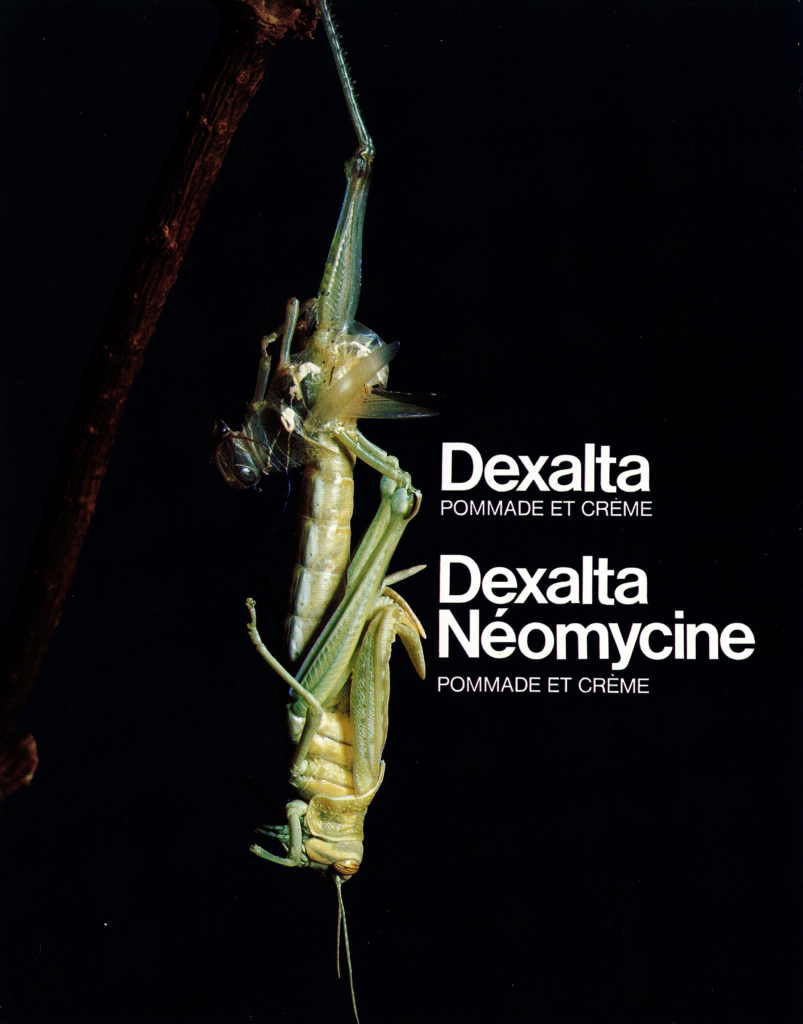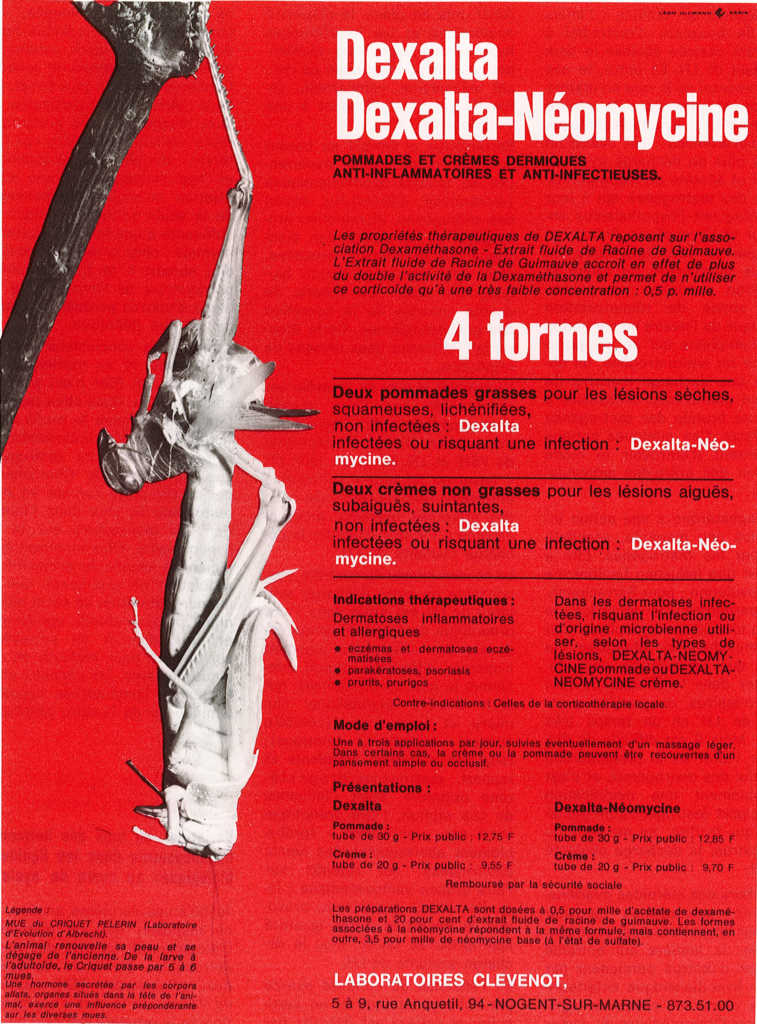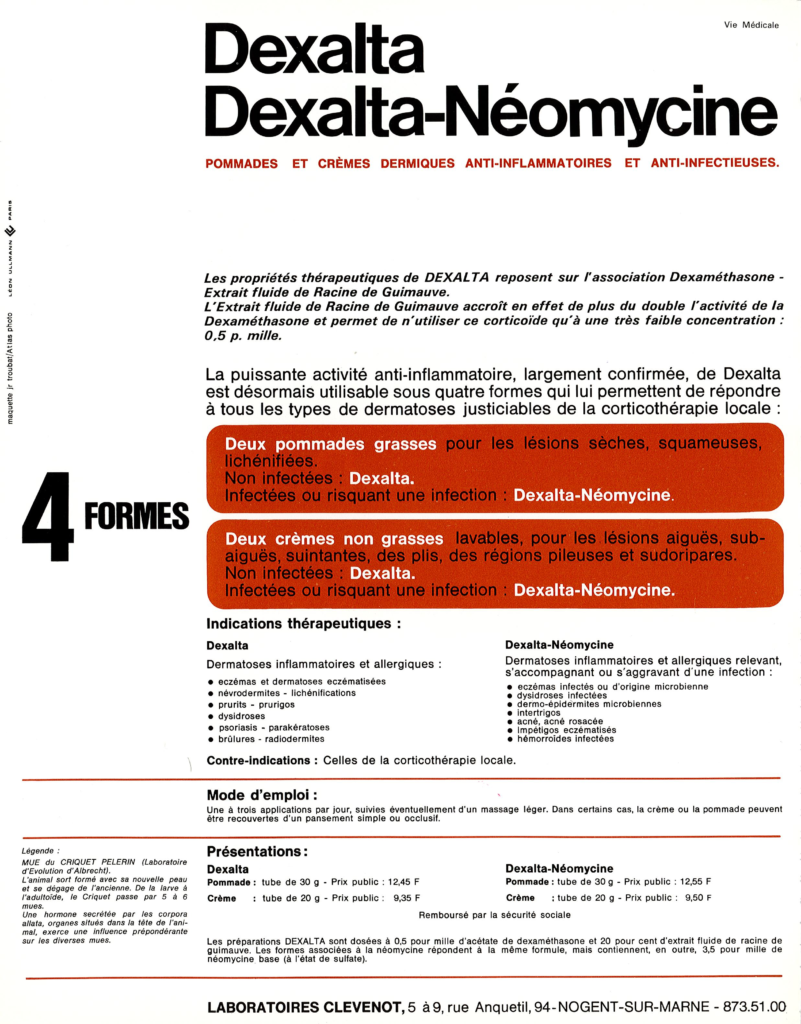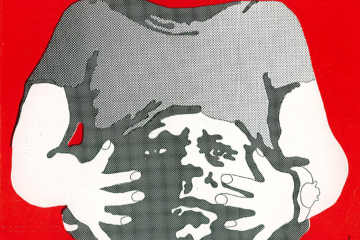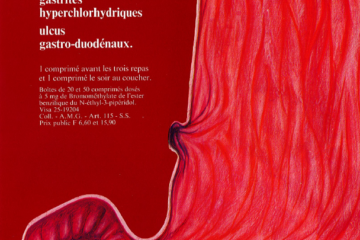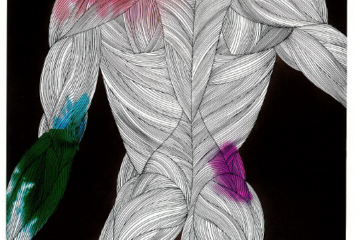Dexalta® was an association of the corticosteroid dexamethasone and a fluid extract of the plant Althea. The drug was used for the treatment of inflammatory and allergic dermatosis, including varicose eczema, psoriasis, pruritus and other skin affections. A sister preparation, called Dexalta-Neomycin, combined Dexalata and the antibiotic drug neomycin sulfate, adapted to treat pathologies with a microbial component, such as infected eczema and other infected skin diseases. Both Dexalta® and Dexalta-Néomycine® were available as a cream and ointment.
The plant extract was prepared from the roots of Althaea officinalis (marshmallow) or Althaea rosea, a plant of the Malvaceae family known for a long time for its antimicrobial, anti-inflammatory, immuno-modulatory, anti-tussive, demulcent, and soothing properties. The root extract contained rhamnogalacturonan polysaccharide mucilage which potentiated the effect of the topical steroid. Extracts of Althaea officinalis are known to exert marked anti-inflammatory and antioxidative properties. The drug Dexalta no longer exists, but extracts of A. officinalis remain used in treatment of dry cough and of irritated mucosa. They are also considered to activate fibroblasts, a useful property for the treatment of wound healing. The mucilage of A. officinalis is a smooth, slippery substance which can soothe and protect irritated mucous membranes and the skin.
The drug illustration is atypical. It represented the molting of the desert locust (Schistocerca gregaria). The insect changes skin several times during its growth, via a molting process under the control of a specific ecdysis hormone which triggers each molt. The hormone helps the animal to quit its old skin and to acquire a larger new skin. By analogy, Dexalta was intended to help regenerating the inflamed skin in human.
